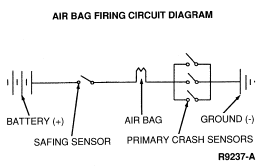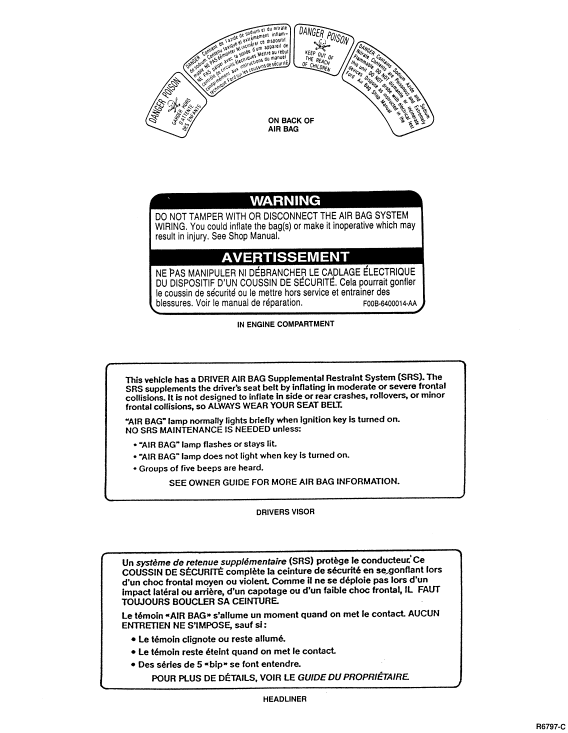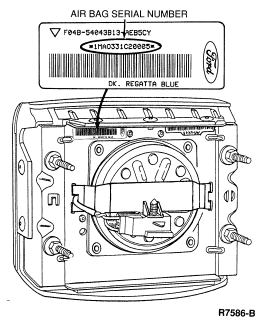
Section 01-20B: Restraints, Passive—Supplemental Air Bag System | 1993 Mustang Workshop Manual |
The air bag system is powered directly from the battery. The system can function with the ignition switch in any position, including OFF and LOCK. The system can also function when the driver's seat is unoccupied. The electrical system performs three main functions:
The electrical system components include:
Sensors
The primary crash sensor assembly is an electrical switch which reacts to impacts according to direction and force. It discriminates between impacts that require air bag inflation and impacts that do not require air bag inflation. When an impact occurs that requires air bag inflation, the sensor contacts close, completing the electrical circuit necessary for system operation.
The safing sensor and one primary crash sensor must be activated
simultaneously to inflate the air bag. 
The air bag system is designed to operate in frontal or front-angled collisions. The air bag(s) should activate in a crash with severe frontal deceleration, more severe than hitting a parked car of similar size and weight head-on at about 28 mph (45 km/h).
Because the system senses the severity of the crash rather than vehicle speed, some frontal collisions at speeds above 28 mph may not be severe enough to require air bag inflation.
The sensors in the vehicle determine if air bag inflation is required in the following manner:
The primary sensors measure the crash severity while the safing sensor confirms the crash and is used to prevent inadvertent deployments possibly caused by a malfunction in the primary crash sensor circuits or crash sensors.

